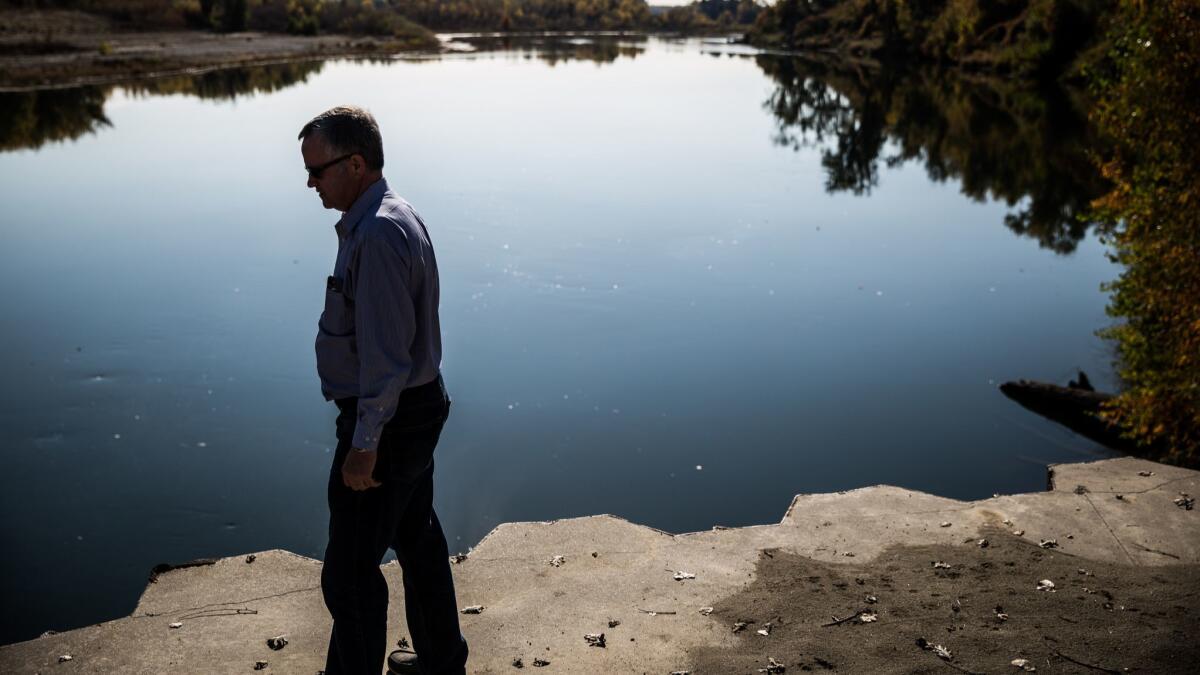Capitol Journal: California should stop thinking about more dams. The state is brimming with them

Reporting from Sacramento — Think California should build a lot more dams to catch these deluges? Forget it.
Yes, the next severe drought is inevitable. And after California dries out and becomes parched again, we’ll wish we’d saved more of the current torrents. Instead, the precious water is washing out to sea.
There’s one dam being planned north of Sacramento in Colusa County that makes sense: Sites. There are also some dam expansion projects that could work.
But California is already dammed to the brim. Every river worth damming has been. And some that weren’t worth it were dammed anyway.
Some old proposed dam locations were found to be earthquake-risky. Quake faults tend to frustrate reservoir planning in this state.
The fact is, however, there are nearly 1,500 dams in California. At least 1,000 are major, and 55 can hold 100,000 acre-feet or more of water. There are 36 reservoirs that can contain at least 200,000 acre-feet. Eleven are in the 1-million-plus category.
An acre-foot is 326,000 gallons, enough to supply two average households for a year.
The biggest California dam is Shasta on the Sacramento River with a capacity of 4.5 million acre-feet. Southern California’s largest reservoir is Diamond Valley near Hemet at 810,000 acre-feet.
In total, California dams can store 43 million acre-feet. We’re nearing the practical limit for what water geeks call “surface storage.”
We’ve about used all the good dam sites.
And dams have become almost unaffordable, like a lot of other things in California. People may like the idea of a brand new reservoir — until they realize who’s going to pay for most of it. They are, through higher water bills.
The way it works is this: Beneficiaries pay. Water used by farmers, manufacturers or homeowners is paid for by those people. Water that benefits the public — for recreation and flood control, for fish and the environment — is paid for by taxpayers.
“Water storage is of value if you can afford it,” says Jeffrey Mount, a water expert at the Public Policy Institute of California and a former UC Davis earth sciences professor. But he questions the value of most new dam proposals.
Coverage of California politics »
“It’s not just that it’s expensive to build,” Mount says. “It’s also that there’s not that much more available water. It makes no sense to build storage if you can’t fill it. There are places you can put reservoirs, but the average amount of water yield a year is relatively low.”
That’s hard to believe after kayaks were used for street travel near the Russian River last week and Interstate 5 in the Sacramento Valley was closed because of high floodwaters.
“Right now everybody thinks all this water is rolling out to San Francisco Bay and there are missed opportunities,” Mount says. “That’s the traditional ‘wasting into the ocean’ argument. But then ask yourself, how much of the time does that happen in California? Things have been pretty dry the last few years.
“If you use these reservoirs only about every 10 years, if they don’t fill often enough, then they’re not paying for themselves.”
Water sales are how the dams mostly get paid for.
Moreover, one dirty secret about dams — a very major flaw — is that they tend to silt up, gradually reducing a reservoir’s capacity. This is especially true of smaller reservoirs in the coast range, where incoming water rolls over mushier ground than found on the west slope of the Sierra. There, streams tumble over firm granite.
A 2009 UC Berkeley report estimated that about 1.8 million acre-feet of storage space had been lost to silt. It found that nearly 190 reservoirs had lost more than 50% of their original capacity.
Former state Sen. Fran Pavley (D-Agoura Hills) told me two years ago that she tried several times to pass legislation appropriating money for silt cleanup. She also sponsored a bill requiring a state study. But the measures were killed.
“I knew full well taking out silt would be quicker and less expensive than building a new storage reservoir,” she said. “But the priority was to build more dams.”
Mount told me at the time: “It’s never going to get better…. All [reservoirs] are losing some fraction of capacity. That’s a universal truth. It’s happening around the world. It’s a global engineering challenge.”
Sites is one dam project that the water world tends to believe makes sense. Mount says “it’s probably doable.”
Most environmental groups seem ambivalent. Sites would be an off-stream reservoir, so it wouldn’t block salmon from their spawning beds.
A pipe would funnel Sacramento River water 14 miles west to the reservoir, which could hold 1.8 million acre-feet. It would be California’s seventh-largest reservoir.
The cost is pegged at $5.2 billion. The state has tentatively kicked in $816 million in bond money for “public benefits.” The feds have loaned $450 million. The Metropolitan Water District of Southern California has offered to buy 50,000 acre-feet annually.
But complete funding is far from assured. And the project is still preparing environmental reports and trying to secure permits. “We’re on track,” says Jim Watson, general manager of the Sites project.
If Sites had been operational, he asserts, I-5 would have been spared from flooding.
Good point. Sites should be built. And the height of at least one dam — Los Vaqueros in Contra Costa County — should be raised and will be.
But the future for California water storage is underground.
Follow @LATimesSkelton on Twitter
More to Read
Get the L.A. Times Politics newsletter
Deeply reported insights into legislation, politics and policy from Sacramento, Washington and beyond. In your inbox three times per week.
You may occasionally receive promotional content from the Los Angeles Times.











